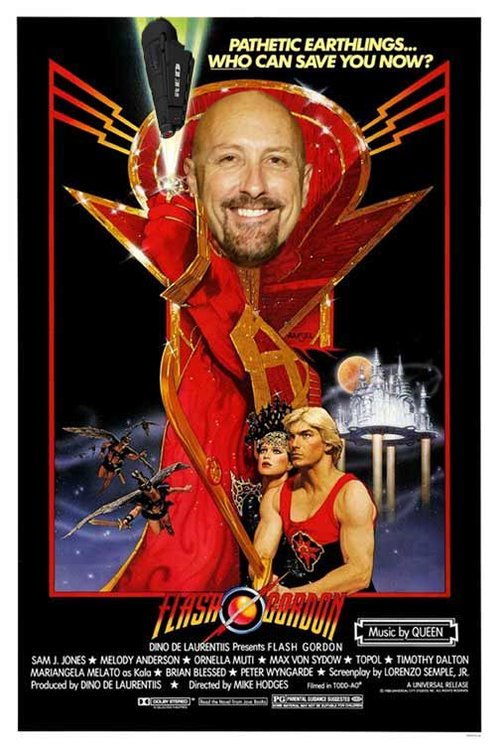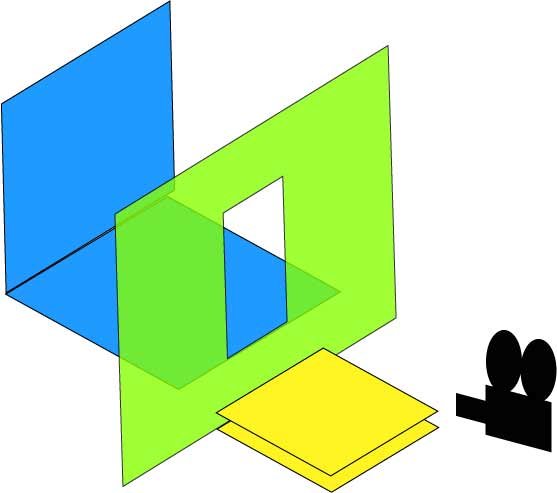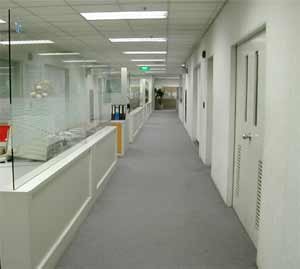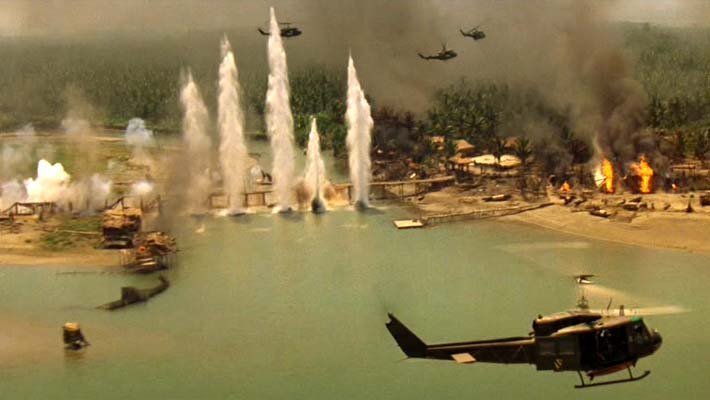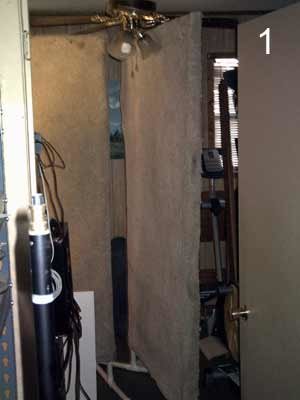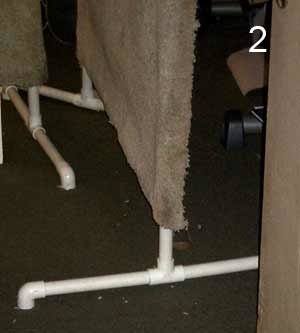
Paul Bruening
Premium Member-
Posts
2,837 -
Joined
-
Last visited
Everything posted by Paul Bruening
-
What do you think would be a good way to perforate it to make it even more sound energy absorbent? Maybe a 1" hole saw just deep enough to puncture the outer coat; evenly spaced holes that open up the glass but leave enough coating to keep the panel strong? It would be a time consuming nuisance. But, I'm guessing it would improve it's sound absorption qualities. I darn sure like the price and rigidity. Thanks again on this, Hal. This is a great tip.
-
-
7D. Nikon lenses. Really.
-
My 26", JVC display monitor (halfway in cost between a consumer TV and a studio monitor) is about ten years old and still looks very good. I can see big flat screens in the stores that have certain characteristics that are impressive. But, few to none really seem to deliver a total, balanced image that can match this JVC CRT. Maybe, it's just that I'm used to it and won't allow my brain to accommodate these other display technologies. Or, maybe, a really good CRT still looks better than they do.
-
-
looking to put together a small crew
Paul Bruening replied to Tom Kwiat's topic in General Discussion
I'll leave names out of stories on this one. I was told at a film festival, years ago, that a producer had solved the problem of undependable volunteer crew by charging them a $1,000 deposit from each crew member that he held in escrow until production's end . I can't vouch for the validity of the story or the man's success at this approach. -
Multiple Color Keys?
Paul Bruening replied to Paul Bruening's topic in Visual Effects Cinematography
These are just some stills I pulled off of Google (I did the diagram in Illustrator). Something like the window still goes on the green key. Something like the office still goes on the blue key. The actors jump through and down onto the mattress. If everything is lined up right, it should look like they've jumped out of a perfectly good high rise? Am I barking up the right tree? -
Has anyone here used two or more colors for keying in one shot? After giving Josh Campbell what I now consider to be a dumb answer, I've rethought his question but don't know anyone who has done it. Let's say you wanted to fake a person jumping out a high rise window. Could you build the key for the windows structure (outside of building) like a doorway in a wall (but on a platform so the characters can jump off and down onto mattresses), paint it key-green, then place a floor to wall cyc in key blue behind that. Then use a still of a building exterior over the green and a still of an office interior over the blue? Would that be a go? If so, how many layers of color difference, along with careful costuming, could you employ in a keyed shot?
-
BBC REPLACES CAMERA CREWS WITH CHIMPS
Paul Bruening replied to Leo Anthony Vale's topic in Off Topic
Union or non-union? -
...or to SATA 3.0?
-
Thanks for the info, Hal. I didn't find anything on weight in the link you provided. What do you guess is the weight per panel on these things? I'm curious because they could be very useful for hard ceilings if they are light enough to suspend easily. As you say, they are obviously useful leaned against walls. How do you think they'll hold up to the rigors of production?
-
Apoalypse Rainbow
Paul Bruening replied to Paul Bruening's topic in On Screen / Reviews & Observations
Goofing aside, I stumbled on this on Youtube. I'm glad someone put it on: http://www.youtube.com/watch?v=gweYa8ZpPV4...feature=related -
Apoalypse Rainbow
Paul Bruening replied to Paul Bruening's topic in On Screen / Reviews & Observations
-
Hmmm. High rises don't often have opening windows, anymore. Does anyone know how far back a building's design and look has to go to get windows that open? A common approach to breaking glass is to get a character to break it out, viewed from inside with the green screen on the outside and just far enough back. If you kept the angle tight enough, the viewers would buy it and your screen wouldn't have to be huge. Then cut to an equally tight shot of the characters jumping out of frame with the same small green screen behind them. Then, it's a stills of the city skyline you need and a still of the office space. The only thing I don't know is how well the shattering glass will behave in composite with the green screen. Someone here is bound to know that.
-
Apoalypse Rainbow
Paul Bruening replied to Paul Bruening's topic in On Screen / Reviews & Observations
-
I've been cycling back and forth between viewings of Apocalypse Now and Finian's Rainbow. I can't wrap my head around the fact that the same guy directed both. AN was the most influential movie of my late teens and early twenties. I've watched both so many times, now, that I'm starting to swap sections of each in my head. Think of certain scenes from AN with "Look to the Rainbow" from FR. "Look. Look. Look to the rainbow. Follow the fella' who follows a dream."
-
Hey Rob, If money's not a problem, good sound blankets are really good. However, if you've got a mind to save some cheese I recommend these. The frames are made of PVC. It's all glued together except the bottom legs group. The 8" upright connectors are unglued and the T-shaped leg pieces are not glued to the uprights. Otherwise they are one glued together unit. I did it this way so they could be pulled off and thrown into a duffel bag. The panels have to be truck hauled unless you don't mind strapping them to the roof of your sedan (which can be done if you use another big piece of scrap, fluffy side down to protect the paint job). The frames are 6' by 4' using slightly bigger, scrap, shag carpet. Better carpet is thicker, denser and noticeably better. The carpet is screwed onto the frames with self-tapping, hex-head screws (ain't power tools grand!). The middle of the panel is a tad floppy but not too much. I got all the carpet for free since it was scrap and the local store owner is supportive of local movie making (it probably would have ended up in the dumpster anyway). The great thing about them is that you can stand them up all over a room or lean them against walls or even prop them up or dangle them against ceilings. And Brother, do they eat echo. Your lighting guys will bitch about them, so you have to move them out of the way between set-ups. But, you tuck them around, here and there, and Voila! Happy sound crew! More importantly, happy sound editor! I've got a dozen of them and would prefer even more. I also haul rolls of scrap carpet of random sizes to throw on wood, tile and concrete floors. They're also handy on pneumatic tired dolly shots. There's no way around the bulk and hassle of sound deadneing stuff. But there's no way to get clean sound without it.
-
Any two video cameras and a roll of duct tape...
-
Well, if we're gonna have a camera report-off then here's my entry: The space in the upper left hand corner is where you put your production company info. This covers all the stuff that I was concerned about. I wanted more information about the film like where I bought it (short ends, you know) and more info about how it was shot. You print them out and get someone like Office Max's print shop to chop them in half. I've got the same thing in Illustrator files if you prefer more control over the doc. or prefer to get the file turned into NCR, multi-copy reports. Camera_Report_for_PO_02.pdf
-
Thanks for showing an interest, Alain, First, you or someone you know has to be able to weld. I've got an ordinary Home Depot bought, MIG welder that I use and an assortment of hand, power tools, and hand tools on hand. You can get the wheels at your local Tractor Supply. I got these on a close-out sale for about $15 each. They usually go for about $50 or more. I could do limited dolly shots with this if I just had to. Like you say, it would take a fairly smooth floor. It's mainly for getting the camera around rough locations without rattling all the optics out of whack on the cameras and lenses. My previous tripod dolly had 3 inch plastic caster wheels. I grimaced every time I had to cross a street with it watching the camera vibrate violently. Plus getting over normal street hurdles like curbs was a 2 manned, dolly scraping experience. Part of the trick of this type of design is how square tube (box tube) fits inside itself. I use 1.25" for the outsides and 1" for the insides. That way the inside piece can telescope through the outside piece. On the stabilizers the inside piece simply drops down through the outside piece. You pick up the leg of the dolly a little and lock the stabilizer in place (use little slabs of wood when locking down onto Grandma's wood floors). * All of the lock downs are Grade 8 nuts welded into place over a drilled hole on the 1.25" piece. A bolt has a little piece of 1" welded to the top of that for a knob. The bolt is run down through the nut and hole to provide a handled lock down mechanism against the 1" piece. I put two in 90 degree relation for stuff that needs the extra alignment control and strength.* The dolly's center is the same way. The outer pieces telescope in and out for a wide footprint or narrow footprint. They have additional pass-through bolts that act as pins as a bit of over-design and operational confidence. 'zat cover it? I can bore you with more, if you like. I can also shoot some close-ups of specific parts.
-
Digital (video) will always have those latitude issues that you mentioned (trouble with highs and lows). Though some you test might do better than what you're used to. On the whole, none of them will quite get as good as film in that department and a few others. The current technology just can't do it. Sorry. If you really hanker for a film look, shoot film. By the way, I'm still drooling at the mouth for a Canon XLH1s. But, more so, if they'd just figure out a solution to the rolling shutter thing on their DSLRs I'd prefer to go with a 5D or 7D. If you are going to stay digital. Think real hard about a 7D.



